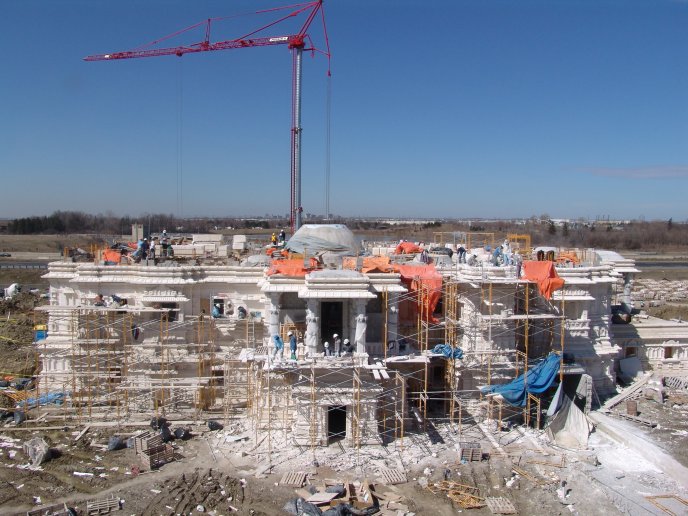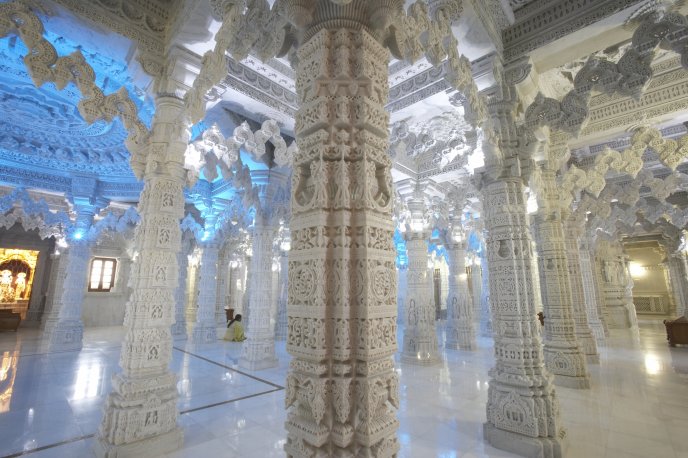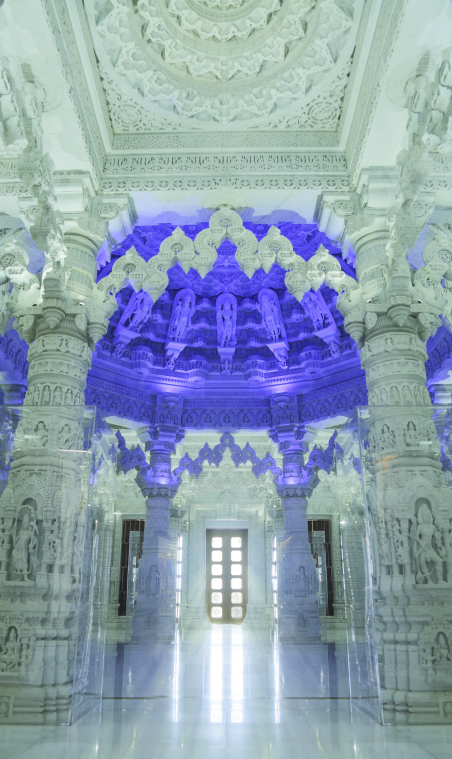Location: Toronto (Etobicoke)
Date of Completion: 2007
Architect: Papadopoulos & Pradhan Architects Inc.
Nominated by: Dr. Shafiq Qaadri, MPP (Etobicoke North)
“What we build and how we build it has a profound impact on who we are and how we are together... our destiny has always been to find strength in our diversity. This is a place where people gather to build something beautiful — a community.”
Ontario Premier Dalton McGuinty, 2007
The first of its kind in Canada, the BAPS Shri Swaminarayan Mandir, a hindu temple built following traditional principles and materials, stands as one of the most prominent physical manifestations of Ontario’s Indo-Canadian community – its values, contributions and history.

For and By the Community
Built for and by the community, the mandir is the first significant building in Canada to reflect the ar-chitectural traditions of one of our nation’s fastest growing communities - a testament to the Canadian values of plurality and multiculturalism and a reflection of Indo-Canadian culture. Truly a community building, the mandir was made possible by 400 volunteers who contributed physically and monetarily to its construction as a form of devotion.
In addition to serving as a temple, the complex also provides much needed community space. The stone Mandir is complemented by a carved wood haveli – or palace – which houses a cultural centre. The centre hosts numerous community programs including an assembly hall, classrooms, religious and educational activities, and a full gymnasium. It also provides the living quarters for the sadhus who perform daily rituals in the mandir.

Divine Proportions and Materials
As with other mandirs, its form is conceived as profound sacred representation of the divine - the Devswarup or living form of God - following strict proportional systems rooted in Vedic traditions. It is meant to bring together human beings and god, through a rich use of symbolism to express ideas and beliefs of Hinduism. Each part of the mandir represents God’s bodily features, from the Paya (foundation), representing the feet, to the Dhvaja (flags), representing the hair.

This post forms part of our World Architecture Day Queen’s Park Picks 2017 series in which we asked Ontario’s Members of Provincial Parliament to nominate a prominent building, past or present, in their riding for a chance to learn more about it. Check out the rest of the series to learn more about Ontario’s great architecture.
Source:
BAPS Shri Swaminarayan Mandir, Mandir, A Passage To Eternity